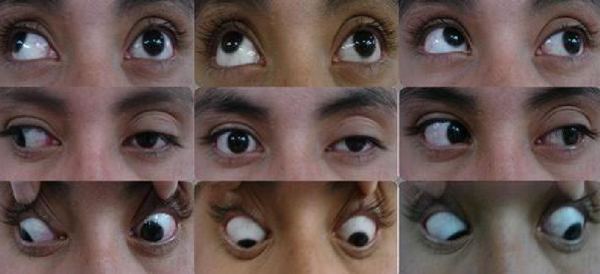Specialty ophthalmology DiseasesDB 9240 | ICD-10 H49.3-H49.4 MeSH D009886 | |
 | ||
ICD-9-CM 367.52, 376.22, 378.55, 378.56, 378.72, 378.86, 378.9 | ||
Ophthalmoparesis or ophthalmoplegia refers to weakness (-paresis) or paralysis (-plegia) of one or more extraocular muscles which are responsible for eye movements. It is a physical finding in certain neurologic, ophthalmologic, and endocrine disease.
Contents
Classification
Ophthalmoparesis can involve any or all of the extraocular muscles, which include the superior recti, inferior recti, medial recti, lateral recti, inferior oblique and superior oblique muscles.
It can also be classified by the directions of affected movements, e.g. "vertical ophthalmoparesis".
Causes
Ophthalmoparesis can result from disorders of various parts of the eye and nervous system:
Thiamine deficiency can cause ophthalmoparesis in susceptible persons; this is part of the syndrome called Wernicke encephalopathy. The causal pathway by which this occurs is unknown. Intoxication with certain substances, such as phenytoin, can also cause ophthalmoparesis.
Treatment and prognosis
Treatment and prognosis depend on the underlying condition. For example, in thiamine deficiency, treatment would be the immediate administration of vitamin B1.
